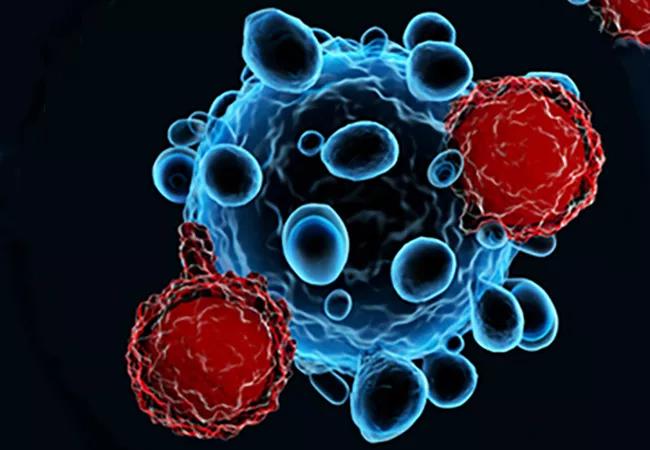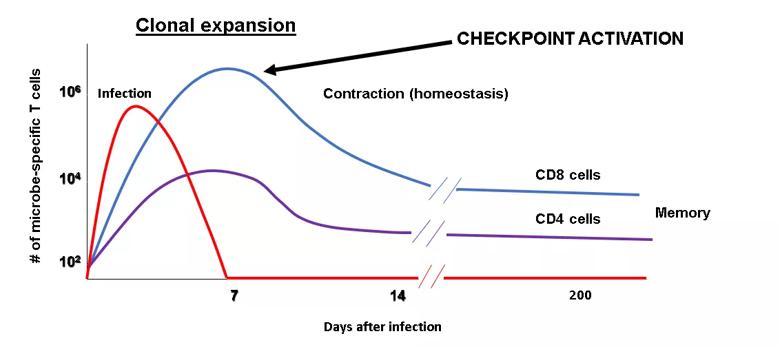New insights on pathogenesis and treatment

Advertisement
Cleveland Clinic is a non-profit academic medical center. Advertising on our site helps support our mission. We do not endorse non-Cleveland Clinic products or services. Policy
The intersection of the fields of rheumatology and oncology has advanced rapidly with the introduction of the first checkpoint inhibitor (CPI) ipilimumab (anti-CTLA4) in 2011 for treatment of advanced melanoma. Since then, five more drugs additionally targeting the PD-1/PD-L1 pathway have been introduced for an increasing number of cancer indications, including a tumor-agnostic indication based on biomarkers of high mutation rates.
These drugs’ effectiveness in terms of durable response rates has literally transformed the treatment of many forms of cancer, but their propensity to induce a wide array of autoimmune diseases has been considered by many to be their Achilles’ heel.
The diagnosis and management of these autoimmune complications are emerging fields in themselves, and we have recently published a comprehensive review on the subject in Nature Reviews Rheumatology. It’s also the subject of a session I’ll be presenting at the 2018 ACR Annual Meeting in Chicago.
With this background, I would like to focus on the lessons we are learning about the basic biology of autoimmune disorders in general, which may provide new insights into pathogenesis and possibly treatments.
The principle of CPI therapy is based on our understanding of T cell activation and deactivation, shown in the figure below.

When our immune system is challenged by a danger signal, such as a virus, naïve T cells with specificity to the pathogen engage via their T cell antigen receptor via presentation of the antigen by an antigen-presenting cell, such as a dendritic cell (Signal 1). While this interaction is essential, it is not adequate to drive T cell activation, and it must be accompanied by a second signal (Signal 2) provided by the co-stimulatory ligand pair CD28 on the T cell and CD80 and/or CD86 on the PAC. In the absence of Signal 2, there is no activation, and the fate is apoptotic cell death or anergy.
Advertisement
What has come to light as a result of CPI therapy is that the deceleration of immune activation that occurs with clearing of the antigen, which normally leads to massive apoptotic cell death and the generation of effector functions, is mediated by additional ligand pairs that function as negative regulators known as “checkpoints.” These checkpoints represent gates of sorts through which activated T cells must pass before returning to the resting state. The CPIs used in cancer therapy close these gates, leading to a marked re-invigoration of cell-mediated immunity.
The link between checkpoints and autoimmunity is an evolving story, and there is growing evidence that dysfunction of these systems may belie many forms of autoimmune diseases. Aside from the preclinical lessons from genetic knockouts, where mice absent CTLA-4 develop rapidly progressive and fatal autoimmunity, genetic absence of PD-1 similarly can induce autoimmunity of a milder form and is associated in various mouse strains with a spectrum of either new or exacerbated autoimmune diseases, including a lupus-like disorder, type 1 diabetes, inflammatory bowel disease and multiple sclerosis.
Where the work has really become interesting is in the exploration of checkpoint biology in human disease that is adding insights into pathogenesis and treatments of primary autoimmune disorders. This is particularly true for the primary immunodeficiencies, which are now increasingly recognized as causes of both autoimmune and autoinflammatory diseases.
Advertisement
Take hypogammaglobulinemia, a state that in children and adults can be accompanied by a variety of autoimmune manifestations, including cytopenias and end-organ inflammation. Aside from the major forms of x-linked disease in children and common variable immunodeficiency (CVID) in children and especially adults, there has been an explosion of new monogenic defects which now account for an increasing portion of patients with hypogammaglobulinemia, especially those with autoimmune features.
Two relatively recently described syndromes known as CHAI and LATAIE have added important insights into the role of checkpoints in man. Both of these disorders, through different genetic defects, result in an underexpression of CTLA-4, a critical early checkpoint described above. In CHAI there is a state of haploinsufficiency where affected individuals have only one functional gene, resulting in lower cell-surface expression of the CP. In LATAIE there is a defect of intracellular trafficking of CTLA-4, which normally spends 90 percent of its time intracellular in microcytic vesicles. The absence of a key transport protein dramatically reduces the amount of CTLA-4 to reach the cell surface. The result is unopposed Signal 1 (or greatly reduced opposition), leading to unbridled T cell activation and ultimately hypogammaglobulinemia via mechanisms that are still poorly understood.
As a result of this hypo-expression of CTLA-4, both syndromes can present with auto-antibody-mediated cytopenias, lymphadenopathy-splenomegaly, hypogammaglobulinemia and organ-specific autoimmunity. This is reminiscent of the CTLA-4 knockout mouse model mentioned above.
Advertisement
These syndromes, combined with the reality that blocking CTLA-4 with CPIs results in a myriad of autoimmune complications, emphasize the importance of CTLA-4 in control of autoimmunity. Lastly there is now evidence that many of the patients, especially those with interstitial lung complications, can be effectively treated with a drug rheumatologists are quite familiar with, namely abatacept, which provides a missing CTLA-4 signal.
This story of discovery at the intersection of rheumatology and oncology is yet another example of the intense interprofessional nature of rheumatology.
To learn more about interprofessional interactions of the practice of rheumatology, including rheumatology-oncology, attend the Biologic Therapies VIII Summit, hosted May 16-17, 2019, by Cleveland Clinic’s Department of Rheumatic and Immunologic Diseases.
Dr. Calabrese is Director of the R.J. Fasenmyer Center for Clinical Immunology at Cleveland Clinic.
Advertisement
Advertisement

Early results show patients experiencing deep and complete response

Inclusion of genomic profiling and risk factors recommended for treatment planning

Collaborative research effort underscores the urgent need for effective second-line therapies in this rare, aggressive cancer

Largest study to date comparing direct-acting oral anticoagulants to low-molecular-weight heparin

Treatment assigned FDA review date in June 2025

Pembrolizumab does not improve outcomes, but immunotherapy may still offer benefit

Cleveland Clinic, the University of Minnesota and University of Cambridge receive $1M grant to develop point-of-care biosensor for early detection and treatment personalization

Long-acting antiemetics and high-dose steroids key to minimizing acute nausea